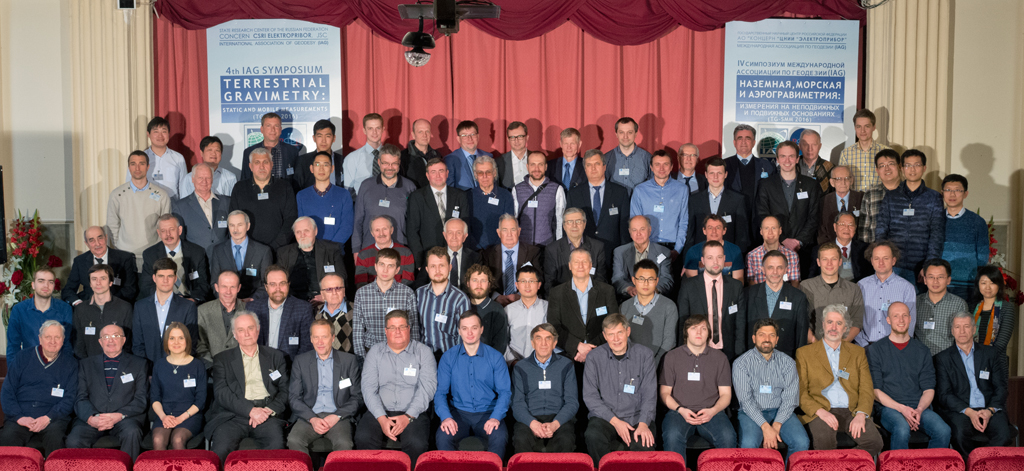Report: 4th IAG Symposium “Terrestrial Gravimetry. Static and Mobile Measurements”
The 4th IAG Symposium “Terrestrial Gravimetry – Static and Mobile Measurements” (TG-SMM-2016) took place in St Petersburg, Russian Federation, 12 to 15 April 2016, at the CSRI “Elektropribor”. It was organised by IAG Commission 2 “Gravity Field” and the State Research Center of the Russian Federation Concern CSRI “Elektropribor”, and co-sponsored by the Russian Foundation for Basic Research and the Committee for Science and Higher Education of the St Petersburg government.

The four streams of the symposium reflect the topics of interest of Sub-Commission 2.1 “Gravimetry and Gravity Networks”:
- Terrestrial, shipboard and airborne gravimetry
- Absolute gravimetry
- Relative gravimetry, gravity networks and applications of gravimetry
- Cold atom and superconducting gravimetry, gravitational experiments
The overarching theme of the symposium was “Advancing Gravimetry for Geophysics and Geodesy”. The International Scientific Committee was chaired by Vladimir G. Peshekhonov (Russia) and Urs Marti (Switzerland), and also included members from 12 countries. Working languages of the symposium - English and Russian - were supported through a translation service. The proceedings of the symposium were published prior to the symposium and included 43 papers.
There were 58 presentations (1 introductory presentation, 39 plenary talks and 18 poster papers) in the program. Five additional presentations were made on-line by researchers from Brazil, Switzerland, Ukraine and USA. 123 participants from 18 countries – Argentina, Austria, Brazil, China, Czech Republic, Denmark, Finland, France, Germany, Italy, Japan, Kazakhstan, Norway, Russia, Sweden, Switzerland, Ukraine, and USA, attended the symposium. Welcome speeches were made by Vladimir Peshekhonov and Urs Marti. The introductory talk “Airborne Gravity Field Measurements – Status and Developments” was given by A.V.Olesen.
It should be noted that together with the presentations on the continued development of absolute and relative gravimeters based on “familiar” physical principles and mechanisms (such as springs, macroscopic test objects, etc.), the application of quantum principles and atomic test objects (the clouds of cold atoms) in the design of new gravity measuring instruments was emphasised in a number of talks. New techniques for gravity field measurements on moving platforms (such as aircrafts and ships), including those based on cold atom gravimeters, were also described in several talks.
The cultural program included a night boat trip on the Neva River, a guided night bus tour of St Petersburg, and individual tours of the museums of St Petersburg (the Hermitage, Russian Museum, etc.). Given the success of this symposium it was resolved that the Fifth TG-SMM symposium will be held in St Petersburg in 2019.
V.Peshekhonov, L.Vitushkin